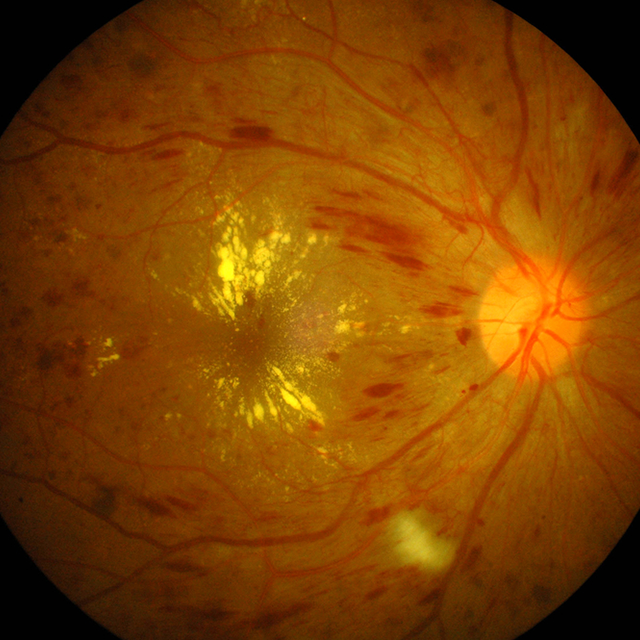Patient Education
Diabetic Eye Disease

Diabetes
Diabetes is a condition that affects millions of people world-wide. It is a disease of the pancreas, where either not enough insulin is being secreted, or the insulin receptors in the body are unable to process it properly. Diabetes has no preference for age, and can therefore affect both children and adults alike. Because insulin is the main hormone that regulates your body's sugar (glucose) level, in diabetic patients the blood-glucose level becomes elevated or unstable. These fluctuations can cause many changes in the eyes such as cataracts and glaucoma, but its main threat is to the retina.
- Blurred Vision
- Cataract
- Diabetic Retinopathy
- Glaucoma
The changes in blood sugar levels caused by diabetes can affect the lens inside your eye, especially when your diabetes isn’t controlled. These changes can result in your vision blurring, which can change from day to day, depending on your blood sugar levels.
Diabetes can cause the lens in your eye to become cloudy. This condition is known as a cataract. This happens because the high sugar levels found in the fluid around the lens causes the lens to swell with more water than usual. The lens then focuses light differently on the retina at the back of the eye, and this may cause your spectacle prescription to change as your cataract develops. If you have diabetes, you’re more likely to develop a cataract, and at an earlier age too, when compared to people without diabetes.
In the early stages the disease is known as background diabetic retinopathy. Because diabetes affects the circulatory system, the arteries of the retina become weakened and start to leak. These leaking vessels leave behind small dot- and blot- like hemorrhages, as well as deposits called exudates. As the disease progresses, the retinal blood vessels become more compromised and the retina starts to become oxygen-deprived or ischemic. This stage is called proliferative diabetic retinopathy, and is characterized by new blood vessel development, called neovascularization, to help maintain adequate oxygen levels within the retina. In the later phases of the disease, continued abnormal blood vessel growth and scar tissue may cause serious problems such as macular edema (fluid under the macula), retinal detachment, glaucoma, and blindness.
Glaucoma may occur amongst people with and without diabetes, and can be a complication of diabetes if retinopathy develops. Glaucoma is caused by an excess amount of fluid pressing on the nerve at the back of the eye.